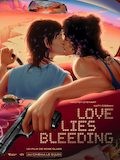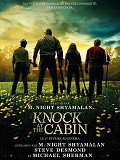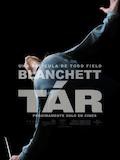28 Days Later

Ukraine, 2003
De Danny Boyle
Scénario : Alex Garland
Avec : Megan Burns, Christopher Eccleston, Brendan Gleeson, Naomie Harris, Cillian Murphy
Durée : 1h52
Sortie : 01/01/2003






An animal-protection commando sets free some chimpanzees infected with a virus that provokes an uncontrollable rage. A single blood drop is enough to pass on the disease… 28 days later, the epidemic has devastated England, where a few survivors are struggling to stay alive. Waking up from a deep coma, Jim suddenly has to face this terrible reality. He meets a surviving couple, Selena and Mark…
RAGE
We last left Danny Boyle on a dream-like Beach: defeated by Hollywood, forced to finish his previous movie with an unexpected and deceiving happy end. Four years later, he’s still working with the writer Alex Garland and the producer Andrew MacDonald, and his career seems back on the right tracks with this fantastic, breathtaking and symbolic thriller. In the tradition of the George A. Romero trilogy (The Night of the Dead is an obvious reference) and the novels of J.G. Ballard (The Wind coming from Nowhere), 28 Days Later is a futurist allegory, an end of the world tale somewhere between sci-fi flick and horror road-movie. Thanks to its metaphorical power and narrative construction, Danny Boyle’s movie is an echo to Apocalypse Now, the hallucinatory masterpiece of Francis Ford Coppola. The director of Trainspotting director didn’t set his film cameras in the Vietnamese rice fields but in the heart of a Western world devastated by a plague created by mankind: rage.
LAST MAN
The film begins with a dynamic introduction denouncing the excess of experimenting on animals. Then, Danny Boyle follows the first steps of Jim out of the hospital. On the wonderful music of Godspeed You Black Emperor, the bewildered resuscitated young man walks in the streets of London devoid of any human traces. Masterly captured by the digital video of Anthony Dod Mantle (DP of Festen and Dogville), these quiet moments before the storm are incredibly beautiful. Apocalyptic visions of a dead town, some of these shots have a rare evocative power. Overturned buses, newspaper stands in ruins, immense billboard filled with personal message floating in Piccadilly Circus: every single detail has been thought through to give the impression of a real contamination. From the beginning the chaos described by Danny Boyle is real, plain, credible.
WHITE NIGHTMARE
Mankind is divided in two. Exhausted after three weeks of fights, a few survivors are trying to escape from the infected pack craving for blood. Danny Boyle conscientiously put in place an elementary lesson in horror cinema. What frightens the spectator most is less the fact that the fight will happen than the unforeseeable moment when the violence will burst out. Like David Cronenberg’s Rage, the people infected with the virus are taken in a bloody frenzy. They have bloodshot eyes and the only trace of humanity left is the way they look. Despite a few shocking scenes, 28 Days Later is not just a simple succession of tour-de-force. Most of what is told lies on the human condition. The movie is divided into three distinct parts, three steps of a journey out of hell: London and its murderous rage, the countryside away from mankind madness and Manchester under military control.
HELL AND WEAPONS
Under the appearance of a zombie movie, Danny Boyle explores his favourite themes and once more makes his own Jean-Paul Sartre’s maxim « Hell is the others ». Riot scenes broadcast on a small screen to guinea pig monkeys up to the final confrontation: always this same unleashed violence, this same need for power, this desire to dominate the other. Major Henry West, a sort of Colonel Kurtz of the third millennium, unemotionally enunciate the list of treats in store: rationalise the non-contaminated human specie, fecundate the surviving women whether they want it or not and eliminate useless men. For him, the world hasn’t changed. The sole fact that the contaminated people are unproductive makes them useless for the species and thus harmful. Danny Boyle’s utterly pessimistic view of human nature was already at work when he was denouncing interested friendships and post-hippie communities in Shallow Grave, Trainspotting and The Beach. For Boyle, life in society always hides a connection to domination, a social and political hierarchy, a repressed violence.
HAPPY ENDING ?
Your neighbour, your brother, even your priests: anybody can become a potential danger. Only love allows a way out towards an intimate haven. For his daughter Hannah, Franck believes in a better world and this love gives him the strength to face the furious horde waiting for him outside the building he lives in; Jim refuses to abandon Selena to the sad fate promised by the military. On the famous music In paradisium pour requiem by Gabriel Fauré, already used by Terrence Malick in The Thin Red Line, a movie with basically the same message, the four people enjoy a moment of peace in the idyllic countryside. An impromptu return to wild life emphasizing the society and urban paranoia of the English author. Despite a few flaws and a vague feeling of “too much”, 28 Days Later is the best film of an underestimated filmmaker, who’s slowly managing to build a fascinating and coherent universe.







